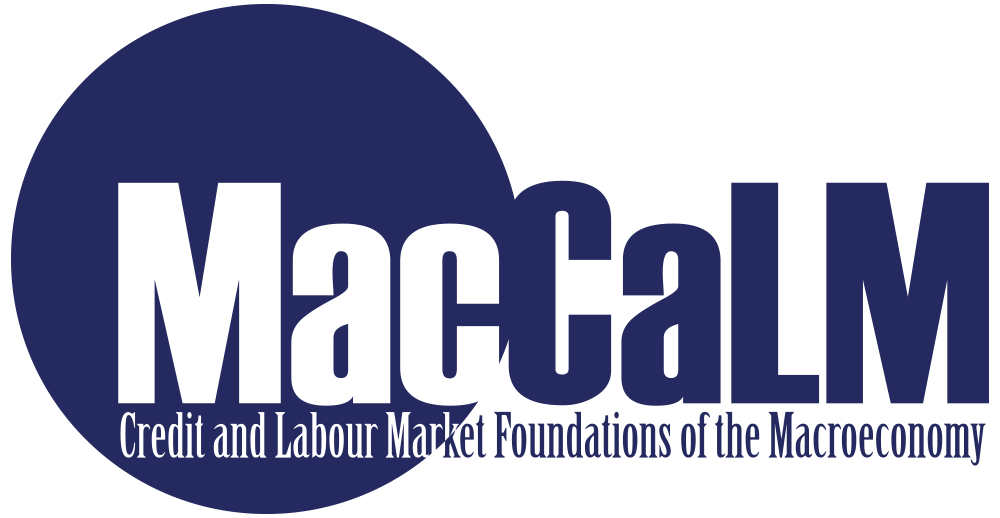Summary
In the 1960s unemployment rates were quite similar in the United States and in the continental European countries. While the unemployment rate in the U.S. has remained at almost the same level at least until the Great Recession, the rates in many European countries have increased, starting in the late 1970s, and stayed considerably higher than in the U.S. since then. At the same time the tax wedge, measured as the sum of labour and sales taxes, has increased in those European countries relative to the U.S.
![]()
A natural framework to understand the relationship between taxes and unemployment is the leading theory of equilibrium unemployment, the Mortensen and Pissarides (MP) search and matching model. However, this simple framework has an important limitation for studying the effects of policies, such as taxation. Productivity is assumed to be exogenous, so that it does not respond to changes in tax rates. This seems restrictive both from an empirical and a theoretical perspective. Empirically, Prescott (2004), among others, documents that the increase in tax rates was accompanied by an increase in aggregate productivity (most notably in France and Germany) relative to productivity in the U.S. In the theory developed in Krusell et al. (2000), changes in productivity are due to a technology which features capital–skill complementarity. The adjustment of the stocks of capital as well as of high- and low-skilled labour in response to a change in policy leads to an endogenous change in productivity.
This paper extends the basic MP model along two dimensions. First, it allows for ex-ante heterogeneity between workers, low and high skilled. Second, it allows two technology shocks, neutral and investment-specific, to be the driving forces of the economy. Specifically, the paper integrates the framework of Krusell et al. (2000) into a business-cycle search and matching model. The calibration follows the approach in Hagedorn and Manovskii (2008), and finds that the model accounts well for the cyclical behaviour of labour market variables in the aggregate and for each demographic group.
The calibration of the model implies that the flow value of non-market activity of high-skilled workers is considerably lower, and for low-skilled workers slightly higher, than the corresponding value for a representative worker in the model with homogeneous workers. Nevertheless, in the model, as in the data, the unemployment rates for these two groups of workers are highly and roughly equally volatile over the business cycle. The fact that the unemployment rate of highly skilled workers is highly volatile, despite the fact that the accounting profits firms make on them are relatively large, is due to the higher volatility and the higher persistence of their marginal product relative to the representative worker case.

The response of unemployment to changes in taxes is substantially lower in the model with worker heterogeneity than in the model with homogeneous workers if both generate the same volatility of labour market tightness. This difference in policy effects is due to an endogenous response of productivity. These effects are driven by the presence of worker heterogeneity and not by curvature in the production function per se.
The semi-elasticity of unemployment with respect to changes in the tax wedge implied by the model is quantitatively consistent with the data. Moreover, the model matches the evidence that countries with higher tax rates have higher aggregate productivity, lower skill premia, and higher unemployment rates among both high and low-skilled workers. This evidence provides support for the key mechanism in the model being based on worker heterogeneity.
The model introduced by this paper is highly suitable for several interesting extensions, for example: studying other policy changes, such as the generosity of unemployment insurance benefits; evaluating the effects of the secular decline in the price of capital on wage inequality across countries with different levels of the tax wedge; incorporating worker heterogeneity into the Real Business Cycle model along the lines proposed here, to help that model simultaneously match the observed responses of hours worked to changes in productivity and tax rates.
References
Hagedorn, M., & Manovskii, I., The cyclical behavior of equilibrium unemployment and vacancies revisited in American Economic Review, vol. 98 no.4, (2008) pp. 1692-1706.
Krusell, P., Ohanian, L.E., Ríos-Rull, J.-V., & Violante, G.L., Capital-skill complementarity and inequality: A macroeconomic analysis in Econometrica, vol. 68 no.5, (2000) pp. 1029-1053.
Prescott, E., Why do Americans work so much more than Europeans? in Federal Reserve Bank of Minneapolis Quarterly Review, vol. 28, no.1 (2004), pp. 2–13.









